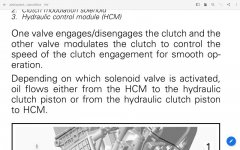spyderfish
Member
2013 STS, 998 twin, 44,000 mostly fun miles
Lately noticing a slight rev after gear shift up and down; sort of oozes into new gear, used to snap into next gear. Feels like clutch is slipping.
Couple of questions, first, is the clutch going to slowly slip more and more, or is there a chance of catastrophic stranding failure? Is there anything that can be done to verify if it is the clutch? Also Is the master brain capable of detecting slippage and generating a code or two? And last, ride until it totally quits, or will riding it cause further damage?
Guess I didn't keep it spinning fast
enough or possibly the 2 low oil incidents have taken there toll?
Any help appreciated.
Spyderfish
Lately noticing a slight rev after gear shift up and down; sort of oozes into new gear, used to snap into next gear. Feels like clutch is slipping.
Couple of questions, first, is the clutch going to slowly slip more and more, or is there a chance of catastrophic stranding failure? Is there anything that can be done to verify if it is the clutch? Also Is the master brain capable of detecting slippage and generating a code or two? And last, ride until it totally quits, or will riding it cause further damage?
Guess I didn't keep it spinning fast
enough or possibly the 2 low oil incidents have taken there toll?
Any help appreciated.
Spyderfish

